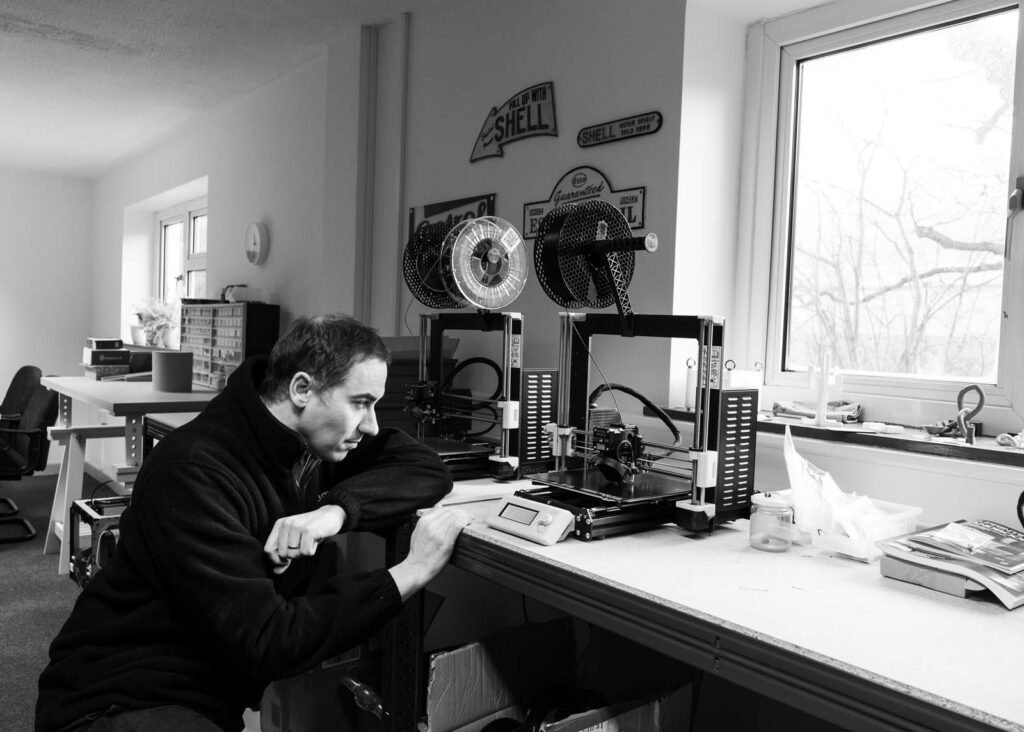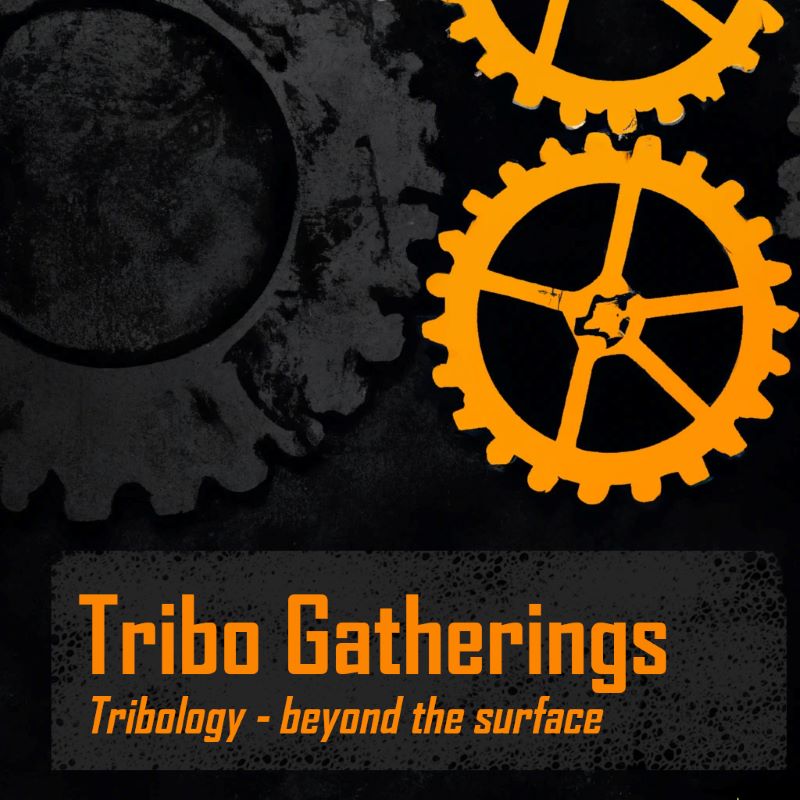The Ingram-Roots method is a sophisticated tool that offers a swift and precise means of evaluating lubricant formulations, even for those that are less experienced in Tribology.
It provides a reliable and repeatable set of results that allows different lubricants’ properties to be easily compared, so that engineers can select the most suitable lubricant for a given application.

The Ingram Roots Test Method
The test uses a MLM2 commercial sliding/rolling tribometer.
After analysis using a defined film thickness for run-in steps, to achieve test severity parity independent of viscosity, normalised Stribeck Curves are used as the main measure, by rating lubricants in terms of their relative ability to reduce friction in the main lubrication regimes.
These curves are then analysed by software to produce a rating between 1 and 10 for each of the 5 lubrication regimes:
𝑅𝑀40 – Rating at 40 °C, Mixed Regime
𝑅𝐸𝐻𝐷40 – Rating at 40 °C, EHD Regime
𝑅𝐵100 – Rating at 100 °C, Boundary Regime
𝑅𝑀100 – Rating at 100 °C, Mixed Regime
𝑅𝐸𝐻𝐷100 – Rating at 100 °C, EHD Regime
These ratings can be used to simplify the comparison of performance between lubricants, with the formulator/ engineer deciding on the most appropriate measure to use, based on the end application of the lubricant.
Download sample Ingram Roots results, including Stribeck Curves

Ingram Roots Development
To help our engineering customers more effectively evaluate lubricants’ properties, we challenged ourselves to create a simple way of presenting information about a lubricant’s performance in an easily comparable way.
Working in partnership with PCS instruments, reviewing all the current standardise methods for lubricants, then proposing a test procedure for the MTM – one we believed would be easy to use, robust and give useful data to their customers.
The final method uses a unique testing strategy – where the lubricant film thickness is kept the same – so all oils experience the same test severity, no matter what the viscosity grade is.
We liaised closely with the software team to ensure this method could be easily used by customers (lab technicians, chemists, R&D scientist etc) – requiring no complex knowledge of tribology or time to develop appropriate test methods. This test method has then been branded the “Ingram-Roots Lubricity Rating System” by the team at PCS Instruments, and is available as neat software package upgrade to all existing MTM instruments.
The approach was fine-tuned over several years and has been since demonstrated to be effective in evaluating a wide range of engine and gear oils.






“Ingram has been very flexible and helpful to adapt the analysis proceedure according to our research question.”
Fabrizio Steinebrunner, Igralub AG für Schmiertechnik
Tribological Thinking
Find out about our latest thinking, research, news and more.
-

Understanding the Science of Skin Feel: How Biotribology Shapes Cosmetic Perception
The global cosmetics market is valued at a staggering $700 billion per year, encompassing everything from skin creams and shampoos to shower gels and makeup. It’s a fast-paced industry where innovation is essential, especially as brands move toward more sustainable, vegan, and cruelty-free formulations. A product’s success isn’t just about what’s inside the bottle—it’s about…
-
🌟 Ingram Tribology Achieves ISO 9001 Certification! 🌟
We are proud to announce that Ingram Tribology has successfully achieved ISO 9001 Certification! This globally recognised certification demonstrates our commitment to delivering the highest standards of quality across all aspects of our operations. It reinforces our dedication to meeting customer and regulatory requirements, and ensures that we continually improve our processes to provide the…
-
Introducing Our New Course: Bio-Tribology for Industry
We are excited to launch our latest training course: Bio-Tribology for Industry—designed specifically for researchers and product development scientists in the food, beverage, cosmetics, and medical industries. Why Take This Course? Understanding bio-tribology is essential for developing high-performance products that interact with the human body, whether it’s optimizing the feel of a skincare product, improving…
-

🚗⚡ Inspiring Future Engineers with Greenpower! ⚡🚗
The Greenpower Trust is an incredible charity that sparks excitement for STEM careers by giving young people the opportunity to design, build, and race their own electric cars. At Haverfordwest High VC School in Pembrokeshire, an all-female race team is gearing up to compete in the F24 Greenpower series—and we had the privilege of supporting…
-
Installation of new electrified MTM at Ingram Tribology ⚡ 🚃 🚘
We have expanded our testing capabilities with the addition of the new MTM-EC (mini traction machine electrical current)! This new instrument allows us to study the effects of electrical currents on lubricated contacts. In our growing electrified world, stray electrical currents can flow through mechanical devices. If the current is high, fluting damage can occur at the…
-
Introducing our new testing capability: tackling Electrically induced White Etching Cracks (eWECs)! ⚡🔬 🚗 👨🔧
In today’s increasingly electrified world, machine elements are often located near electric motors and generators, where they can be exposed to stray currents. Electric vehicles and wind turbines are prime examples of where this issue can arise. These stray currents can significantly impact tribological contacts, accelerating subsurface alterations in the steel and leading to premature…
-

Gear Micropitting Screening Test
Micropitting is a type of fatigue wear commonly found on gear teeth. The gradual loss of material in the form of small surface pits leads to a change in the geometry of the component; if this is not controlled, it can result in failure of the part. The standardised method of evaluating a lubricants ability…
-

Merry Christmas from all of us at Ingram Tribology
Our Christmas card this year depicts the scene of Santa enjoying the drinks left out for him near the fireplace. Santa is trying both port and hot chocolate and notices a distinct difference in the mouthfeel between the two. The port has a drier, thinner feel. Whilst the hot chocolate impacts a smoother, creamier feeling. …
-

Check out our first Tribo Gatherings Podcast
We have started a Podcast! Our first guest is Dr. Connor Myant from Imperial College. We discuss biotribology, as related to the testing of food and hip joint failures. We discuss the advances in 3D printing and how Connor moved from Tribology into 3D printing. We discuss all Connors current projects and thoughts for the…

